16 Lucio Fontana Concetto spaziale, Attese 1961 waterpaint on canvas 21 3/8 x 28 3/4 in. (54.3 x 73 cm.) Signed, titled and inscribed “l. fontana Concetto spaziale ATTESE 1+1-333H” on the reverse.
Provenance Galerie Tarica, Paris Private collection Christie's, London, Post-War and Contemporary Art Evening Sale, June 22, 2006, Lot 32 Private Collection, Europe Exhibited Munich, Galerie Heseler, Fontana, September 3 – 28, 1967 Literature E. Crispolti, Lucio Fontana Catalogue raisonné des peintures, sculptures et environnements spatiaux, vol. II, Brussels, 1974, no. 61 T 9, p. 126 (illustrated) E. Crispolti, Fontana catalogo generale, vol. II, Milan, 1986, no. 61 T 9, p. 425 (illustrated) E. Crispolti, Lucio Fontana Catalogo ragionato di sculture, dipinti, ambientazioni, Tomo II, Milan, 2006, no. 61 T 9, p. 613 (illustrated) Catalogue Essay “I don’t want to make a picture, I want to open up space, to create a new dimension for art, to connect it up with the cosmos as it lies infinitely outstretched, beyond the flat surface or the image.” LUCIO FONTANA 1970 Lucio Fontana Italian painter, sculptor, and theorist of Argentine birth, is canonically recognized as a leader of the twentieth century avant-garde and an instigator of the action genre. Introduced to sculpture by his father and classically trained under sculptor Adolfo Wildt member of the Novecento Italiano group, Fontana would quickly react against the ideology instilled within the romanticism of retrospective Italian art and his attention would soon turn toward Neoexpressionism. The desire to investigate notions of sculptural space, however, would remain a key component of Fontana’s practice, gaining enough momentum to become one of his greatest contributions to art history, transcending notions of dimensionality, exemplified here in Concetto spaziale, Attese, 1961. In the aftermath of World War II, Fontana, like many of his European and American contemporaries, instinctively felt that the meaning of art had changed and, with this in mind, he began to expand on the theoretical concept of art and space in five manifestos, developed throughout 1947 to 1952. Sharing a Futurist interest in technological and scientific progress, Fontana emphasized the need to push abstraction past its stagnant two-dimensional state and into the third and fourth realms of physical dimension. This form of abstraction necessitated the inclusion of time as a spatial element; indicated through the active intervention of spatial form, the planar confine of the canvas was sliced through in a dramatic gesture, revealing extensions of time and space– physical negotiations of infinity. Melding architecture, sculpture and painting, Fontana’s aesthetic idiom transcends the superficiality of surface and confronts the sanctity of painterly traditions by slashing, slicing and puncturing the canvas. Striking in its meditative stark black pigment, Concetto spaziale, Attese, 1961, reverberates with intuitive poetic gesture; four elegant vertical incisions punctuate the canvas like musical notes ringing through a dark abyss. Literally translated, the title of this piece, like many in this series, means Spatial concept, and the word Attese means to wait or to expect. Rarely wasting a canvas, the artist would spend much of this time contemplating and waiting until a moment of inspiration overcame him. He would then approach the painted canvas with his blade, creating concise slashes or tagli. Puncturing the once tense surface of the canvas, it delicately folds back inviting the viewer’s gaze to reach beyond the plane, to penetrate and contemplate the infinite expanse. In order to achieve this illusion, the artist would often line the reverse of the canvas with black linen; resulting in the appearance of black space beyond the slashes, furthering the perception of depth. Fontana’s choice of color in this work evokes the boundless quality of interplanetary space, and beyond that, noted by the breaking of the surface, suggests a collapse in temporality. indeed, the present work is a magnificent example of Fontana’s compositional and chromatic cosmos: “With my innovation of the hole pierced through the canva
16 Lucio Fontana Concetto spaziale, Attese 1961 waterpaint on canvas 21 3/8 x 28 3/4 in. (54.3 x 73 cm.) Signed, titled and inscribed “l. fontana Concetto spaziale ATTESE 1+1-333H” on the reverse.
Provenance Galerie Tarica, Paris Private collection Christie's, London, Post-War and Contemporary Art Evening Sale, June 22, 2006, Lot 32 Private Collection, Europe Exhibited Munich, Galerie Heseler, Fontana, September 3 – 28, 1967 Literature E. Crispolti, Lucio Fontana Catalogue raisonné des peintures, sculptures et environnements spatiaux, vol. II, Brussels, 1974, no. 61 T 9, p. 126 (illustrated) E. Crispolti, Fontana catalogo generale, vol. II, Milan, 1986, no. 61 T 9, p. 425 (illustrated) E. Crispolti, Lucio Fontana Catalogo ragionato di sculture, dipinti, ambientazioni, Tomo II, Milan, 2006, no. 61 T 9, p. 613 (illustrated) Catalogue Essay “I don’t want to make a picture, I want to open up space, to create a new dimension for art, to connect it up with the cosmos as it lies infinitely outstretched, beyond the flat surface or the image.” LUCIO FONTANA 1970 Lucio Fontana Italian painter, sculptor, and theorist of Argentine birth, is canonically recognized as a leader of the twentieth century avant-garde and an instigator of the action genre. Introduced to sculpture by his father and classically trained under sculptor Adolfo Wildt member of the Novecento Italiano group, Fontana would quickly react against the ideology instilled within the romanticism of retrospective Italian art and his attention would soon turn toward Neoexpressionism. The desire to investigate notions of sculptural space, however, would remain a key component of Fontana’s practice, gaining enough momentum to become one of his greatest contributions to art history, transcending notions of dimensionality, exemplified here in Concetto spaziale, Attese, 1961. In the aftermath of World War II, Fontana, like many of his European and American contemporaries, instinctively felt that the meaning of art had changed and, with this in mind, he began to expand on the theoretical concept of art and space in five manifestos, developed throughout 1947 to 1952. Sharing a Futurist interest in technological and scientific progress, Fontana emphasized the need to push abstraction past its stagnant two-dimensional state and into the third and fourth realms of physical dimension. This form of abstraction necessitated the inclusion of time as a spatial element; indicated through the active intervention of spatial form, the planar confine of the canvas was sliced through in a dramatic gesture, revealing extensions of time and space– physical negotiations of infinity. Melding architecture, sculpture and painting, Fontana’s aesthetic idiom transcends the superficiality of surface and confronts the sanctity of painterly traditions by slashing, slicing and puncturing the canvas. Striking in its meditative stark black pigment, Concetto spaziale, Attese, 1961, reverberates with intuitive poetic gesture; four elegant vertical incisions punctuate the canvas like musical notes ringing through a dark abyss. Literally translated, the title of this piece, like many in this series, means Spatial concept, and the word Attese means to wait or to expect. Rarely wasting a canvas, the artist would spend much of this time contemplating and waiting until a moment of inspiration overcame him. He would then approach the painted canvas with his blade, creating concise slashes or tagli. Puncturing the once tense surface of the canvas, it delicately folds back inviting the viewer’s gaze to reach beyond the plane, to penetrate and contemplate the infinite expanse. In order to achieve this illusion, the artist would often line the reverse of the canvas with black linen; resulting in the appearance of black space beyond the slashes, furthering the perception of depth. Fontana’s choice of color in this work evokes the boundless quality of interplanetary space, and beyond that, noted by the breaking of the surface, suggests a collapse in temporality. indeed, the present work is a magnificent example of Fontana’s compositional and chromatic cosmos: “With my innovation of the hole pierced through the canva
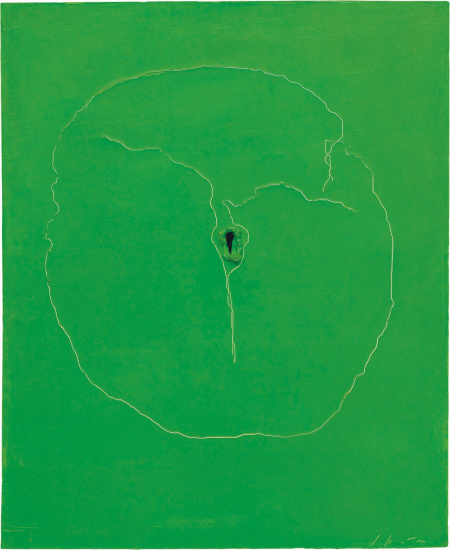
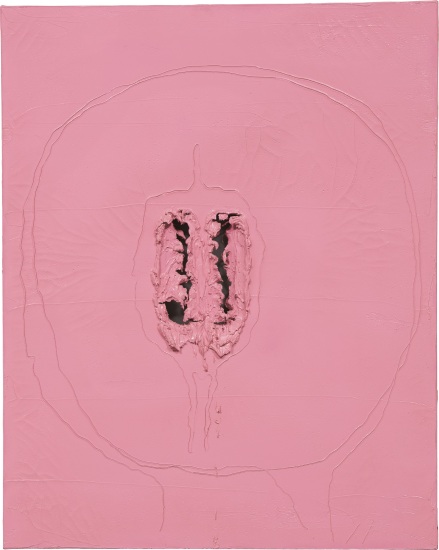
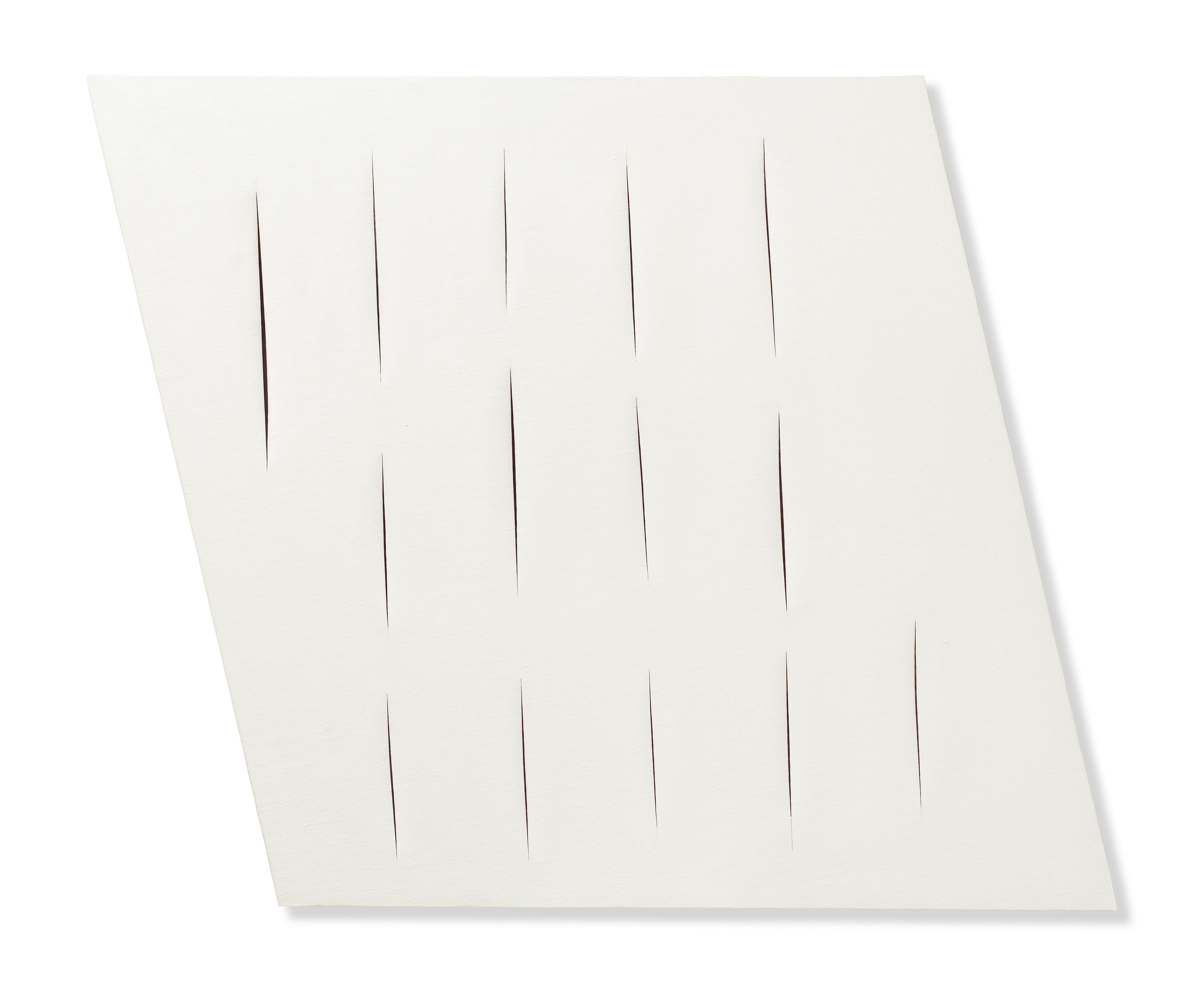
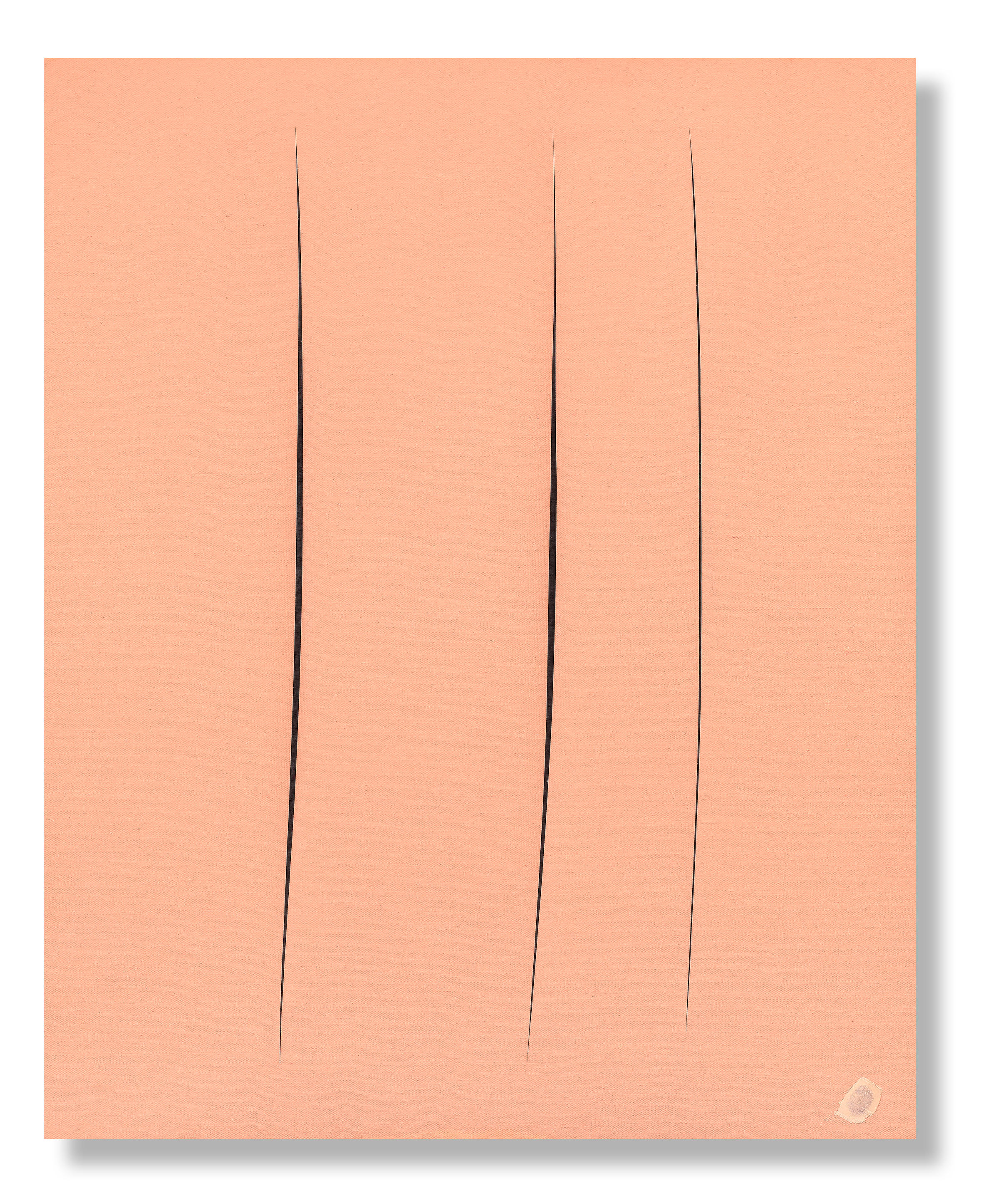
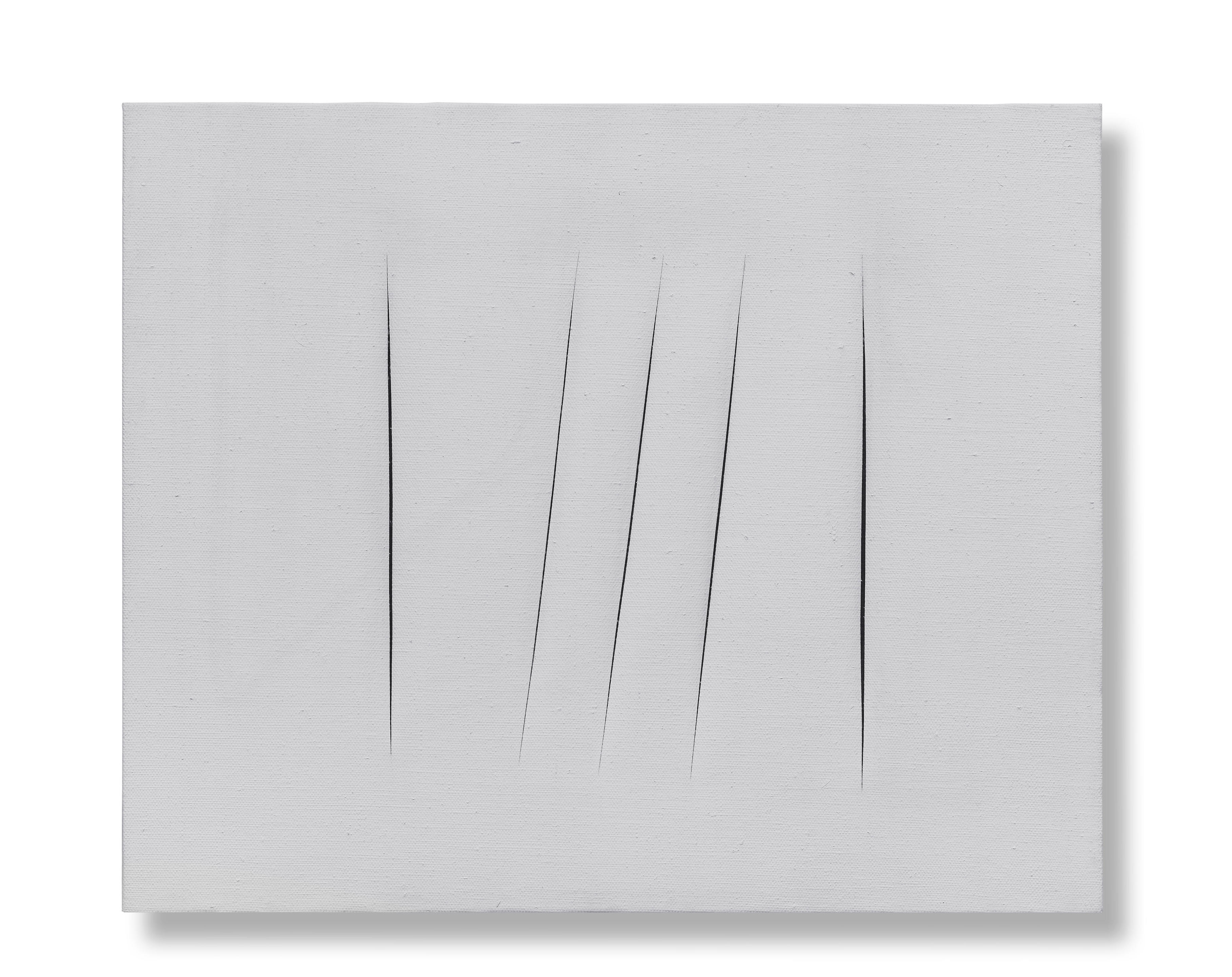



.jpg)
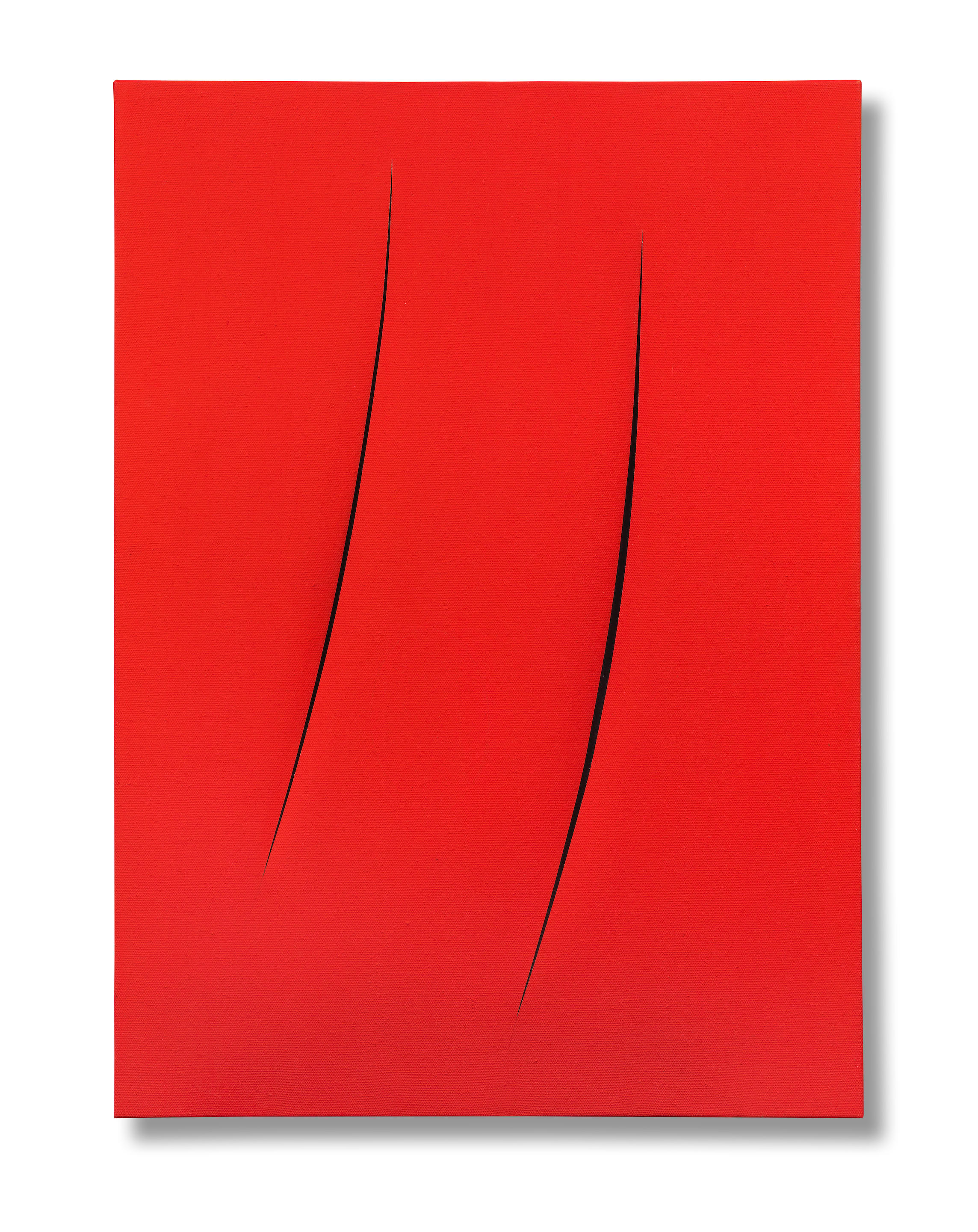
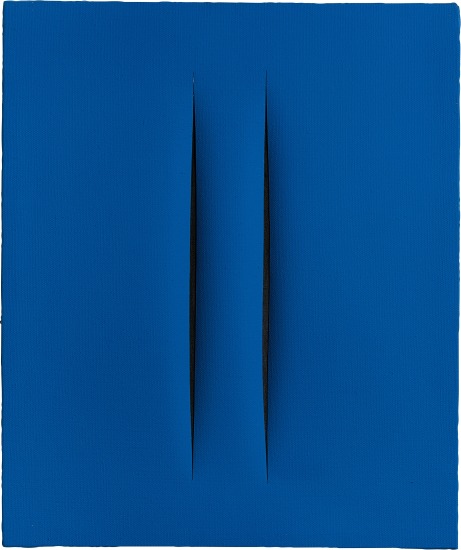
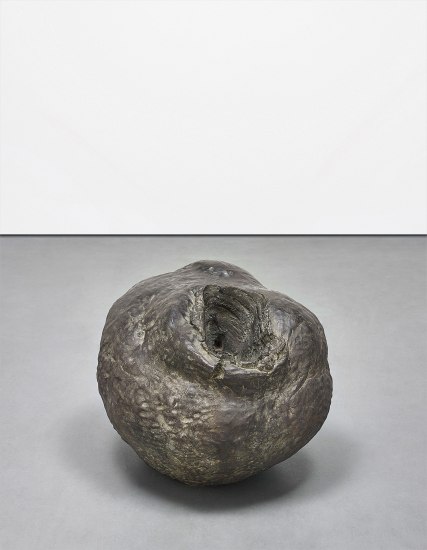

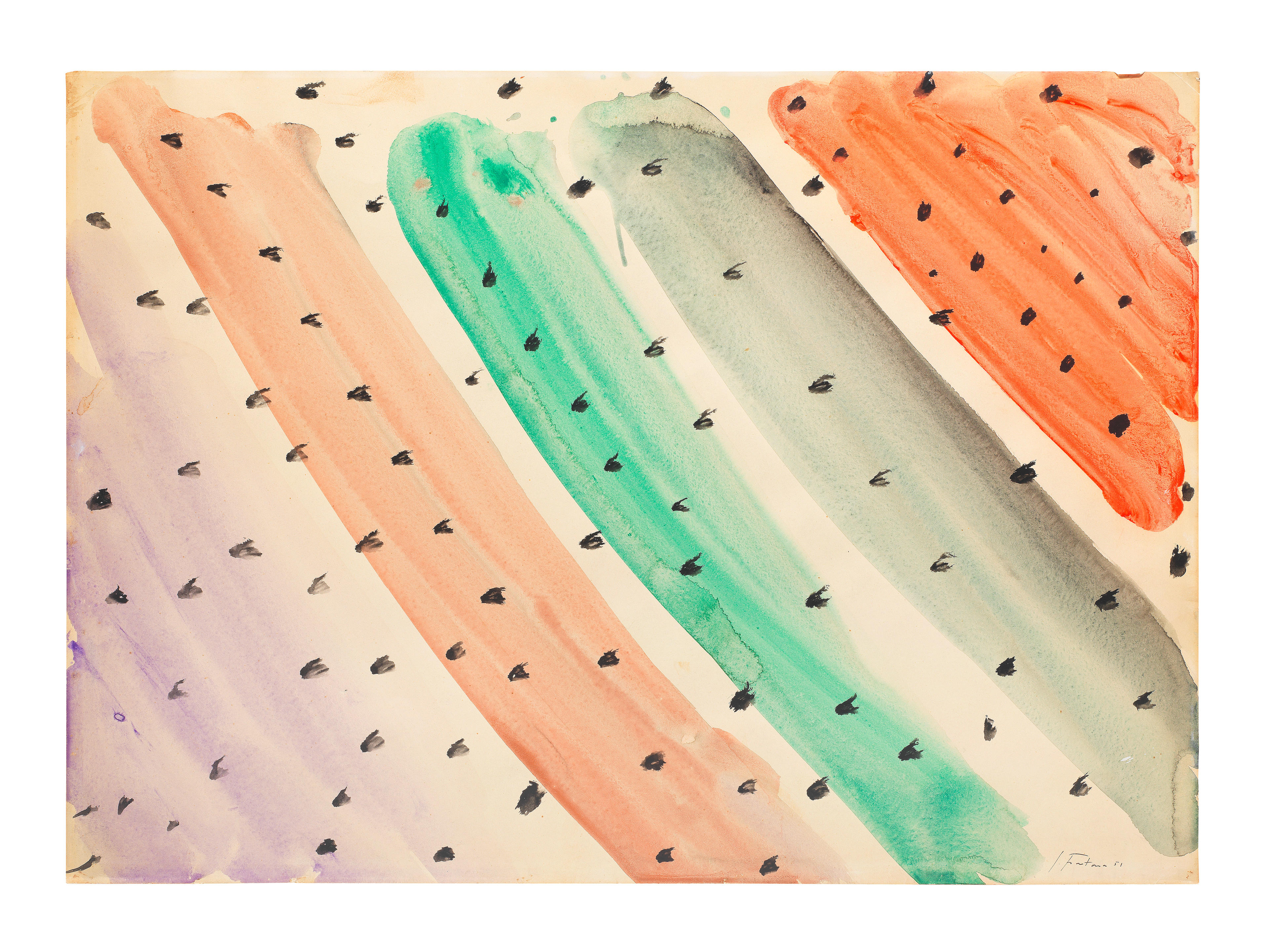
Testen Sie LotSearch und seine Premium-Features 7 Tage - ohne Kosten!
Lassen Sie sich automatisch über neue Objekte in kommenden Auktionen benachrichtigen.
Suchauftrag anlegen